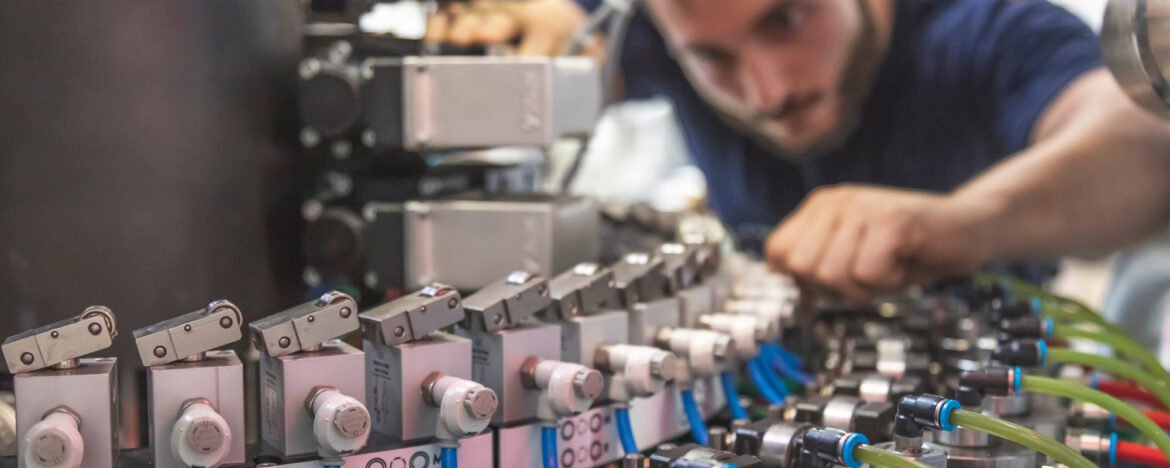In today’s competitive industrial landscape, efficient packaging plays a crucial role in product presentation and preservation. Businesses often face the dilemma of balancing quality with cost-effectiveness when acquiring packaging machinery. Second hand packaging machines offer a compelling solution by providing access to reliable equipment at reduced prices. This article explores the nuances of purchasing second hand packaging machines, offering insights into their benefits, considerations, and practical application in various industries.
Buying Guide for Second Hand Packaging Machines
Understanding Second Hand Packaging Machines
Second hand packaging machines refer to equipment previously owned and used by another party but offered for resale. These machines encompass a wide range of types, from filling and sealing machines to labeling and wrapping equipment. The primary appeal lies in their affordability and potential cost savings, making them attractive options for businesses aiming to optimize operational expenditures.
Benefits of Opting for Second Hand Machines
Investing in second hand packaging machines can yield significant financial advantages for businesses, especially startups and small enterprises. These machines are typically priced lower than their new counterparts, allowing companies to allocate resources more efficiently. Moreover, purchasing second hand equipment often entails shorter lead times, enabling quicker deployment within production facilities.
Factors to Consider Before Purchasing
Before committing to a second hand packaging machine, several critical factors merit consideration. First and foremost is the condition of the equipment. Conducting a thorough physical inspection and operational tests ensures that the machine meets operational standards and performance expectations. Additionally, assessing the reputation and reliability of the supplier is crucial to mitigating risks associated with purchasing used machinery. A reputable supplier should provide comprehensive documentation regarding the machine’s maintenance history, previous usage patterns, and any refurbishments or upgrades performed. This transparency helps in evaluating the machine’s lifespan and compatibility with existing production lines.
Types of Second Hand Packaging Machines
The market for second hand Second hand packaging machine encompasses a diverse array of equipment tailored to different packaging needs. Common types include filling machines, sealing machines, labeling machines, and wrapping machines. Each type serves specific functions within the packaging process, offering distinct advantages and considerations when purchased second hand.
Filling Machines
Filling machines are integral to packaging liquids, powders, and granular substances into containers. When buying a second hand filling machine, it’s essential to verify its compatibility with the product being packaged and assess the wear and tear on critical components like valves and seals. Conducting trials with sample products can provide insights into the machine’s accuracy and efficiency.
Sealing Machines
Sealing machines ensure product integrity by securely sealing packaging materials. When opting for a second hand sealing machine, factors such as seal quality, adjustment capabilities, and compatibility with packaging materials must be evaluated. Inspecting the machine’s heating elements and pressure settings ensures consistent and reliable sealing performance.
Labeling Machines
Labeling machines automate the application of labels to products or packaging containers. When purchasing a second hand labeling machine, verifying its compatibility with label types (e.g., self-adhesive, shrink sleeve) and inspecting the condition of rollers and sensors are critical. Testing the machine with different label sizes and materials ensures accurate and efficient labeling operations.
Wrapping Machines
Wrapping machines encompass various types, including stretch wrapping machines for pallets and shrink wrapping machines for individual products. When buying a second hand wrapping machine, considerations include film tension control, heat distribution, and compatibility with product dimensions. Evaluating the machine’s film consumption rates and energy efficiency helps in determining overall operational costs.
Advantages and Challenges
Advantages of Second Hand Packaging Machines
Second hand packaging machines offer several advantages that make them a viable option for businesses looking to optimize their packaging operations:
Cost Savings
One of the primary reasons businesses opt for second hand packaging machines is the significant cost savings compared to purchasing new equipment. Used machines are typically priced lower, allowing companies to allocate their budget more effectively.
Availability of High-Quality Equipment
Contrary to misconceptions, many second hand machines are in excellent condition, having been well-maintained and refurbished by reputable suppliers. This availability of high-quality equipment at lower prices enables businesses to acquire advanced technology without exceeding their budget constraints.
Reduced Environmental Impact
By opting for second hand equipment, businesses contribute to sustainability efforts by extending the lifecycle of machinery and reducing overall waste generated by manufacturing processes. This environmentally responsible approach aligns with corporate social responsibility initiatives and promotes a circular economy mindset.
Challenges of Second Hand Packaging Machines
While second hand packaging machines offer compelling benefits, they also present several challenges that businesses should carefully consider:
Risk of Buying from Unreliable Sources
One of the primary concerns when purchasing second hand machinery is the risk of dealing with unreliable suppliers or sellers. Without adequate verification of the machine’s condition and history, businesses may face unexpected repairs, downtime, or operational disruptions.
Limited Warranty and Support
Unlike new equipment, second hand machines often come with limited warranty coverage and after-sales support. This lack of comprehensive protection can pose challenges in addressing unforeseen issues or technical difficulties that may arise after purchase.
Compatibility Issues
Integrating a second hand packaging machine into existing production lines requires careful consideration of compatibility factors, including software integration, mechanical fit, and operational requirements. Mismatched specifications can lead to inefficiencies or incompatibilities that hinder production efficiency.
Conclusion:
Purchasing second hand packaging machines can be a strategic decision for businesses seeking to balance operational efficiency with cost-effectiveness. By understanding the benefits, challenges, and considerations associated with second hand equipment, businesses can make informed decisions that align with their budgetary constraints and operational requirements. As industries continue to evolve, the demand for sustainable and economically viable solutions underscores the relevance of exploring second hand machinery as a viable investment option.




